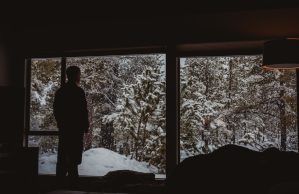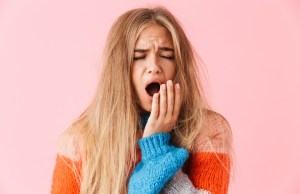Between three and six percent of the population is at risk for a chronic depression that is called Double Depression. It can interfere with daily tasks and quality of life, as well as the increased risk for suicidal thoughts and behaviors.
With a bleak name like Double Depression, you would think there is no good news to report. However, treatment is available and can help, and it can save the lives of individuals with Double Depression. The problem is that many people wait to get help or do not get it at all.
What Is Double Depression?
Double Depression is a complication of a psychiatric illness called dysthymic disorder or dysthymia. Dysthymia is a chronic and depressed mood that is paired with one or two symptoms of clinical depression like low energy or low self-esteem that lasts for about a couple of years in adults and one year in children. The dark mood, which is sometimes described as a “veil of sadness” or a “fog,” is evident almost every day and can be prolonged for many years. In fact, some individuals experience this mood disorder for one or two decades—and sometimes more—before finding treatment.
As time goes by, more than half of the people with dysthymia have worsening symptoms that can lead to a major depression on top of the dysthymia. This is called Double Depression.
The Difference Between Double Depression and Major Depression Without Dysthymia
There is a difference between Double Depression and major depression. Low-grade, chronic depression is followed by a full depressive syndrome in Double Depression, but not in major depression alone. People with non-chronic, major depression alone have a “baseline” mood that is normal. However, people with Double Depression may not be able to identify—or have never known—what not being depressed is.
In one out of five individuals who have an episode of major depression, it can become chronic and persist for two or more years. However, in most people who have major depression, it usually lasts a few weeks to a few months.
Double Depression Research Findings
Florida State University Distinguished Research Professor and Bright-Burton Professor of Psychology Thomas Joiner researched Double Depression and found that individuals who have dysthymia fall into a major depressive state.
According to Joiner, Double Depression is “under-recognized and harder to treat than either dysthymia or major depression by themselves.”
Joiner and a team studied the psychological assessments of 54 adults who entered a psychiatric outpatient facility for non-psychotic adults who were 55 years and older. They were given questions before starting treatment to measure depression, and it was found that they felt hopeless, anxious and as if they didn’t have control over their lives. The findings were that Double Depressed patients had high levels of hopelessness. On the other hand, patients with major depression or dysthymia had moderate levels of hopelessness.
Joiner said that patients who are hopeless have given up and feel that the world is against them. In addition, they feel the future looks bleak, and they are not able to fight back. He said the deep-rooted hopelessness is a reason Double Depression is hard to treat. The chronic nature of the underlying dysthymia is another reason.
Another factor in why Double Depression is hard to treat is that people who have dysthymia feel that depression is a part of who they are. They don’t seek treatment for it even when it turns into major depression.
Features of Double Depression
- Chronic mild depression increases the risk of developing Double Depression.
- Relapse rates are higher for Double Depression as compared with major depression in that the less intense dysthymic component is often not detected, and the major depression is only treated.
- Hopelessness can be a symptom in dysthymia and major depression. But, extreme hopelessness tends to be a big factor in Double Depression.
- With Double Depression’s extreme sense of hopelessness, there is an increased risk of having suicidal thoughts.
- Individuals feel they do not have any control over their lives or situations.
- Feelings of persistent sadness and negativity.
- Feelings of guilt, worthlessness, helplessness or hopelessness are evident.
- Loss of interest in activities, including sex, which used to be pleasurable.
- The ability to concentrate is affected.
- Complaints about poor memory.
- Conditions like rheumatoid arthritis or diabetes get worse.
- Trouble sleeping or oversleeping occur.
- Gain or loss of weight.
- Fatigue, loss of energy.
- Anxious, agitated, irritable.
- Speech and movements are slow.
- Complaints of headache, stomachache and digestive problems.
How Does Double Depression Affect Health?
With the studies showing that people with Double Depression have a greater sense of hopelessness than people with dysthymia or major depression alone, it puts them in a constant state of stress. This causes changes in the body, including:
- Risk of heart disease
- Diabetes
- More likely to abuse tobacco, alcohol or drugs.
- More likely to have an unhealthy diet.
Is it Possible to Prevent Double Depression?
One way to prevent Double Depression is to treat dysthymia. Antidepressants can help, but they may take longer to work and not be as effective for dysthymia as they are for acute major depression.
Cognitive therapy can be effective in the treatment of dysthymia. It focuses on changing negative thinking patterns and gives individuals new ways of seeing and dealing with themselves and their surroundings. A combination of an antidepressant and cognitive therapy is most often needed. The recommendation is to begin one approach—either cognitive therapy or an antidepressant—for a few months and monitor the effect. If the result is not effective, then switch to the other approach or combine the two treatments.













